Artillery in Ireland: Coastal Defences, Fort Dunree, Fort Mitchell - Spike Island
Artillery preserved in Ireland, Coastal Defences
Fort Dunree
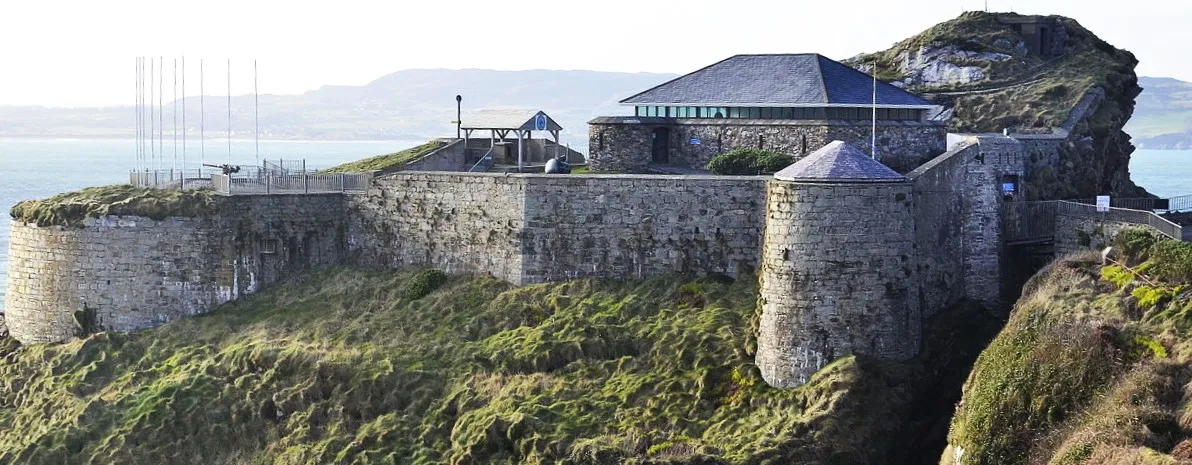
(Kittysoftpaws Photo)
Fort Dunree (Irish: An Dún Riabhach, meaning 'Grey Fort' or Dún Fhraoigh meaning "Fort of Heather") is a coastal defence fortification located on the west side of the Inishowen peninsula, County Donegal, Ireland. The fort is located on a rocky promontory accessed over a natural fissure. Originally built as part of a series of fortifications defending Lough Swilly during the Napoleonic Wars, located opposite Knockalla Fort on the other side of the lough. The fort was neglected after the peace of 1815. In 1874 it was armed with seven 24 Pounder guns. It was remodelled in 1895 to have 2 x 4.7 inch (120 mm) QF guns below, and later 12-pounder (5 kg) QF and 2 x 6 inch (152 mm) guns in an upper land battery. The top of a hill overlooking the site was walled in to form a redoubt. Both 6-inch guns were operational during the First World War.
On 6 December 1921, the Anglo Irish Treaty was concluded. It provided for the establishment of the Irish Free State which happened on 6 December 1922. The Treaty included provisions by which the British would retain sovereignty over three strategically important ports known as the Treaty ports, one of which being described in the Treaty as: Lough Swilly (d) Harbour defences to remain in charge of British care and maintenance parties. Accordingly, even after the establishment of the Irish Free State, the Royal Navy continued to maintain its presence at Fort Dunree. Fort Dunree remained under British sovereignty until 3 October 1938 when, pursuant to the Anglo-Irish Trade Agreement of 25 April 1938, the territory was ceded to Ireland.
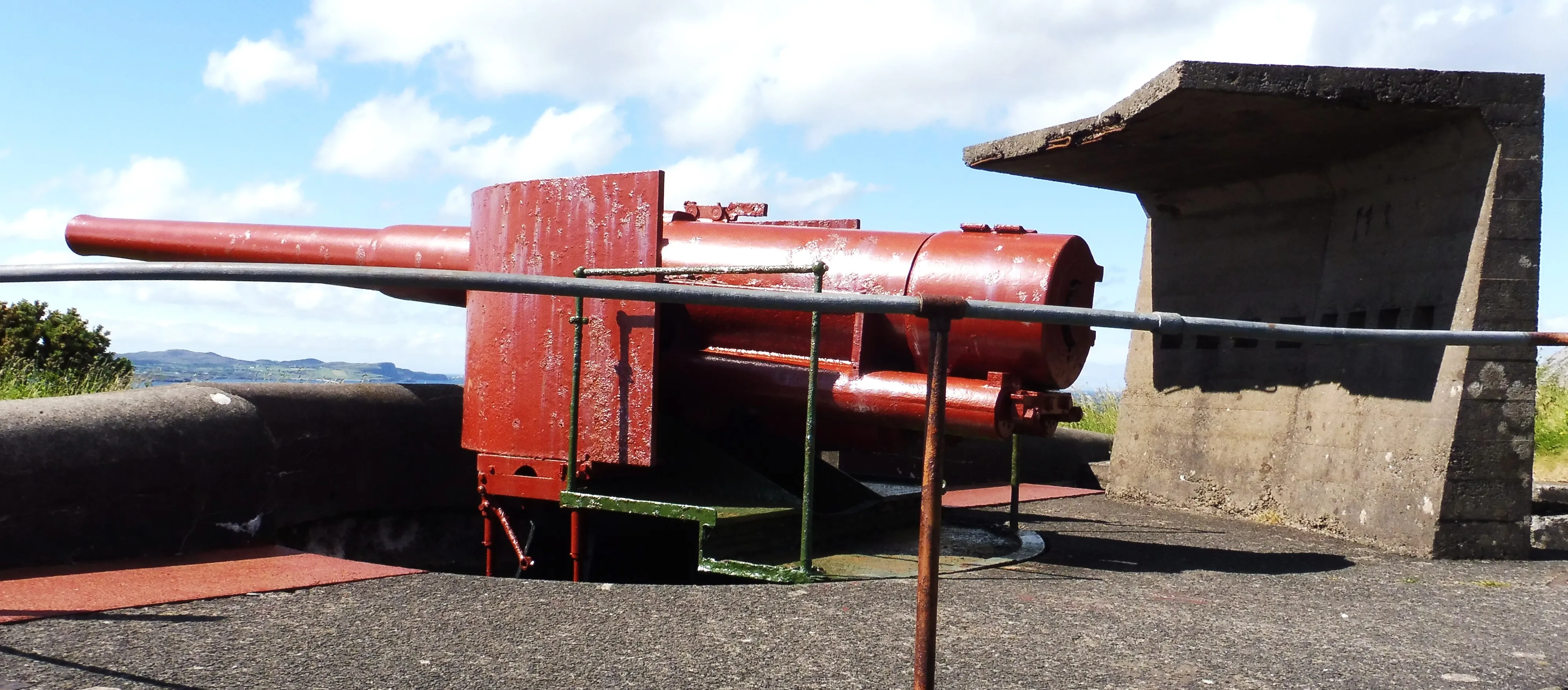
(Edward Bourke Photo)
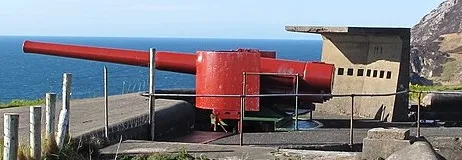
(Patrick Mackie Photo)
The guns at the Fort were manned by the Irish Army until decommissioned following the Second World War. Fort Dunree was used by the Irish Army for training until 1990. The fort is now a military museum with detailed exhibitions, many restored guns including this BL 6 inch Mk VII naval gun and an old military camp.
(Patrick Mackie Photo)
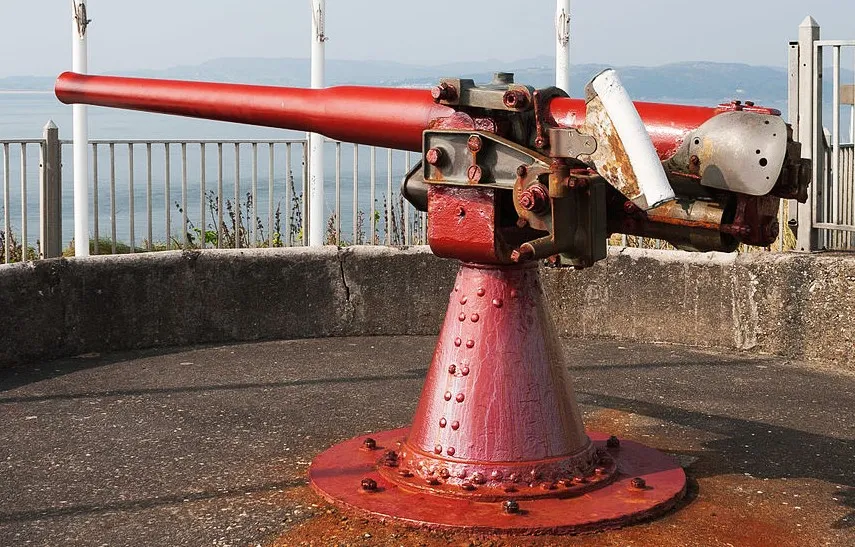
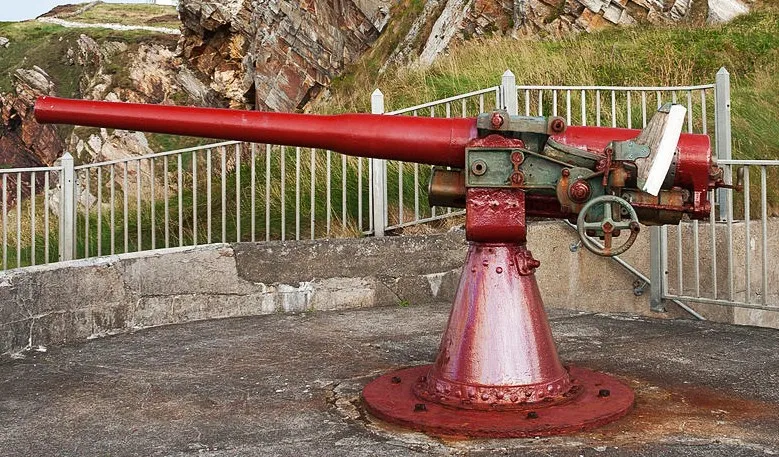
(Andreas F. Borchert Photos)
QF 12 pounder 12 cwt Mk. I or Mk. III gun at Fort Dunree. British 76.2 mm gun with a range of ca. 7,315 m. The gun faces north-west across Lough Swilly.
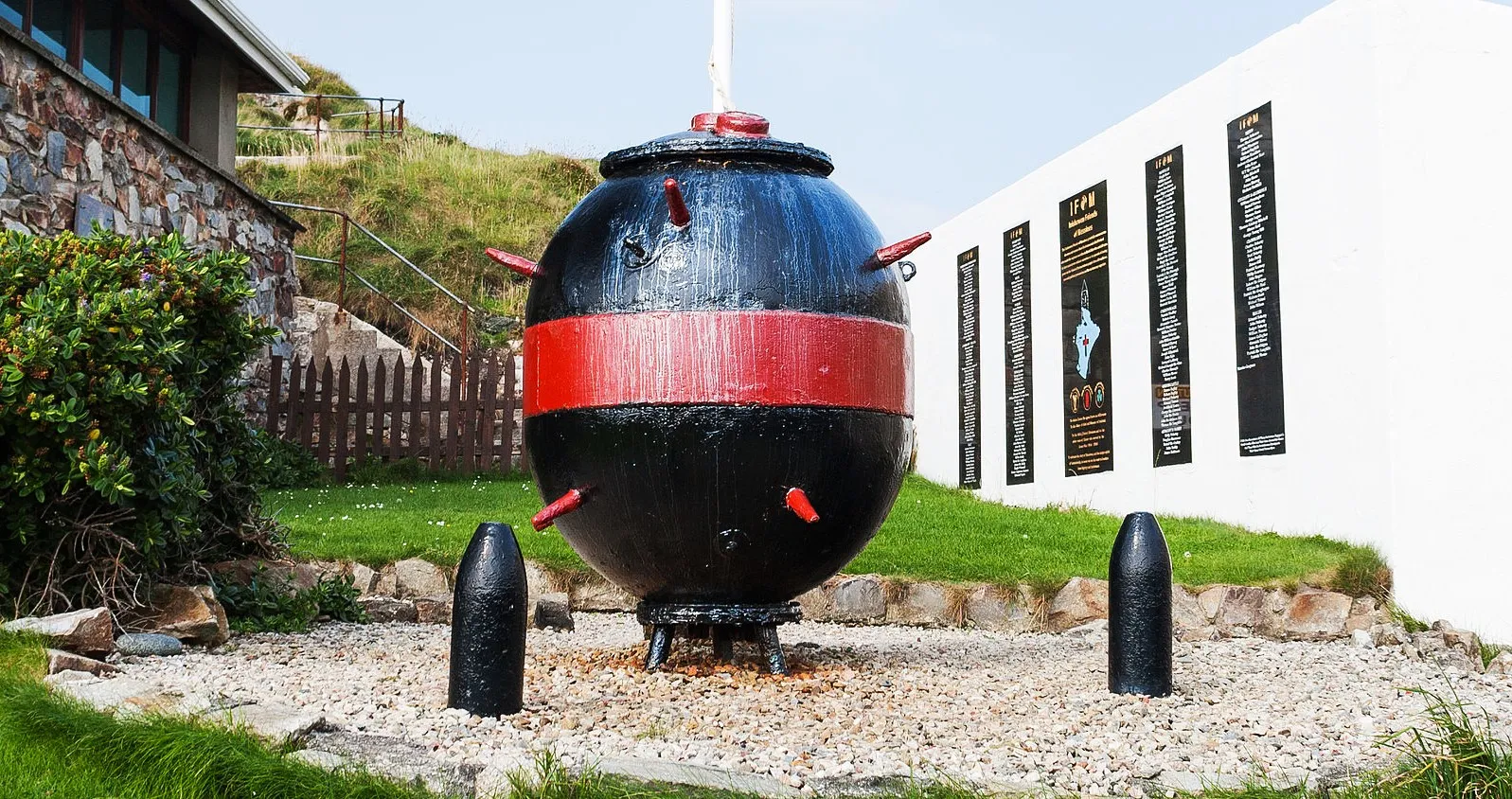
(Andreas F. Borchert Photo)
Naval mine in front of the memorial erected by the Inishowen Friends of Messinas.
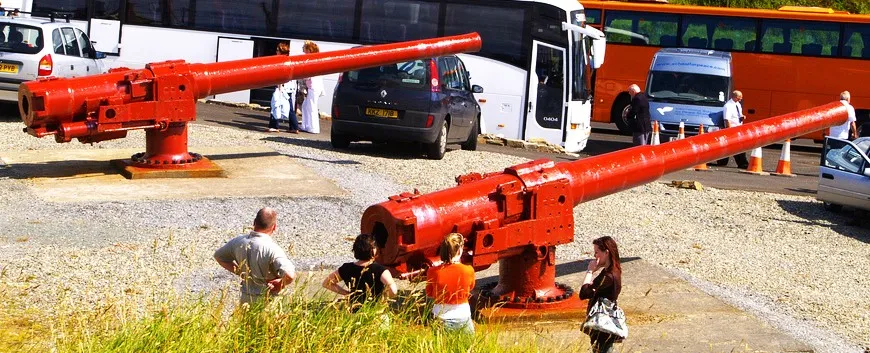
(dingbat2005 Photo)

(Kenneth Allen Photo)
BL 6 inch Mk VII coast defence guns dating from World War I, Fort Dunree, Lough Swilly, Ireland.
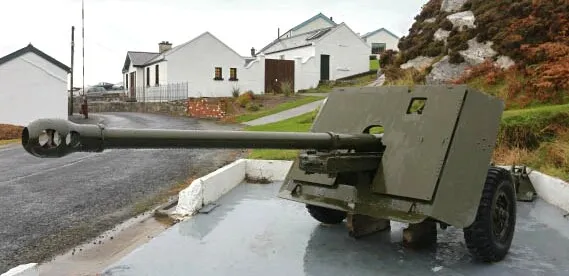
WorldWanderingsNet Photo)
Ordnance Quick-Firing 17-pounder anti-tank gun. This 76.2-mm (3 inch) gun developed by the United Kingdom during the Second World War. It was used as an anti-tank gun on its own carriage, as well as equipping a number of British tanks. Used with the APDS shot, it was capable of defeating all but the thickest armour on German tanks. It was used to "up-gun" some foreign-built vehicles in British service, notably to produce the Sherman Firefly variant of the US M4 Sherman tank, giving British tank units the ability to hold their own against their German counterparts.
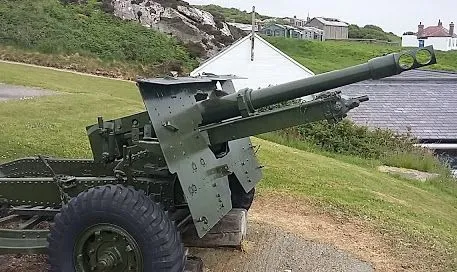
(Donegal Daily Photo)
Ordnance QF 25-pounder field gun.
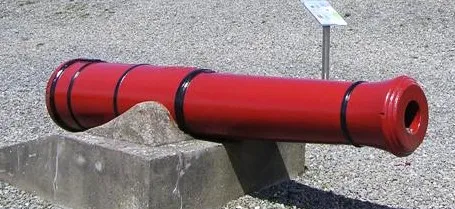
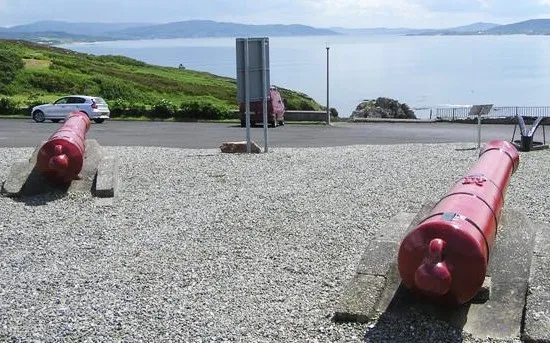
(Kenneth Allen Photo)
Cast iron Blomefield SBML guns.
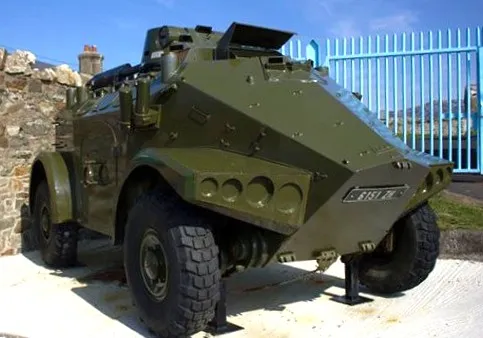
(Fort Dunree Photo)
Panhard M3 VTT Armoured Personal Carrier at Fort Dunree Military Museum, Dunree, Inishowen, County Donegal. Vehicle was used in Irish Army UN Peace Keeping duties.
Fort Mitchell, (Fort Westmoreland), Spike Island, County Cork, Ireland
In the last 1300 years Spike Island has been host to a 6th century Monastery, a 24 acre Fortress, the largest convict depot in the world in Victorian times and centuries of island homes. The island’s rich history has included monks and monasteries, rioters and redcoats, captains and convicts and sinners and saints. Over the course of its history, what is now called Fort Mitchel has been used as a base by the British and the Irish armies, the Irish Coast Defence Artillery and the Irish Naval Service. Today the island is dominated by the 200 year old Fort Mitchel, the star shaped Fortress which became a prison holding over 2300 prisoners. Take the scenic ferry ride from Kennedy Pier, Cobh, and enjoy a fully guided tour of our island and fortress, and relax in our cafe and picnic areas. Get captured in the history and mystery of this magical heritage island. The 24 acre star shaped Fort Mitchel is one of the largest in the world and it was the cutting edge of military technology when it was completed around 1850. The points of the star shape meant that defenders could arc fire over all parts of the island, making the whole island one effective kill zone. Should anyone get close enough to the Fort, flanking galleries made for ideal sniper positions hovering over enemy troops. And the whole Fort is set down in such a way that it can barely be seen by enemy troops, making it almost impossible to target.


(The Artillery Club of Ireland Photos)
The fort was designed and built by General Vallency, a character of his time who had 4 wives and 14 children. The work on the Fort began in 1804 when the threat of invasion from Napoleon was very real but it was left incomplete with his defeat at Waterloo. Two earlier forts had been built before hand as the strategic importance of Spike Island was noticed long before Winston Chruchill would call the island ‘The sentinel tower of the approaches to Western Europe’. On its completion the Fort was designed to garrison up to 3000 men, but the famine years drove up the prisoner population and Spike instead had to keep men in rather than keep them out. The last of the prisoners left in the late 1800’s and the Fort was used by both the British and Irish army and Navy over much of the 20th century before becoming a prison again in 1985. The Fort was originally called Fort Westmoreland but it was renamed Fort Mitchel after the Nationalist hero who was a prisoner on Spike in the 1840s. Today, visitors can go through the walls of the fort to the enormous parade ground inside, and many of the buildings and tunnels can be explored as part of your trip to Spike Island.

(Kondephy Photo)
Cast Iron possible 6-pounder Smoothbore Muzzleloading Gun mounted on an iron gun stand overlooking the entrance to Fort Mitchel with two Blomefield Cast Iron possible 24-pounder 50-cwt Smoothbore Muzzleloading Guns, mounted on an iron garrison gun carriage, No. 1 and No. 2 of 2 guarding the entrance to Fort Mitchel.

(StevieG Photo)
Blomefield Cast Iron possible 24-pounder 50-cwt Smoothbore Muzzleloading Gun, mounted on an iron garrison gun carriage, No. 2 of 2 guarding the entrance to Fort Mitchel.

(Travel Lodge Ireland Photo)
Cast Iron possible 24-pounder 50-cwt Smoothbore Muzzleloading Gun, mounted on a Naval gun carriage on the fortress wall.

(Colin Stone Photo)
Cast Iron possible 24-pounder 50-cwt Smoothbore Muzzleloading Gun, mounted on an iron garrison gun carriage.

(Colin Stone Photo)
Cast Iron Smoothbore Muzzleloading Gun, mounted on an iron gun carriage.


(Colin Stone Photo)
QF 12-pounder 12-cwt Mk. I Gun mounted on a shielded iron gun mount.

(Irish Defence Forces Photo)
1 Artillery Regiment fire as part of the 21 Gun Salute from Spike Island to mark the 75th Anniversary of the handover of the Treaty Ports.


(Colin Stone Photos)
Breechloading 6-inch Mk. VII Gun, on an iron Naval Mounting.

(Guliolopez Photo)
Breechloading 6-inch Mk. VII Gun on a Mk. II(L) CP Garrison Mounting.

(The Artillery Club Photo)
Breechloading 6-inch Mk. VII Gun on a Mk. II(L) CP Garrison Mounting.

(Brian Cleary Photo)

(Spike Island Ferry Photo)
Breechloading 6-inch Mk. VII Gun mounted on a concrete stand.



(Colin Stone Photos)
Ordnance QF 25-pounder field gun.
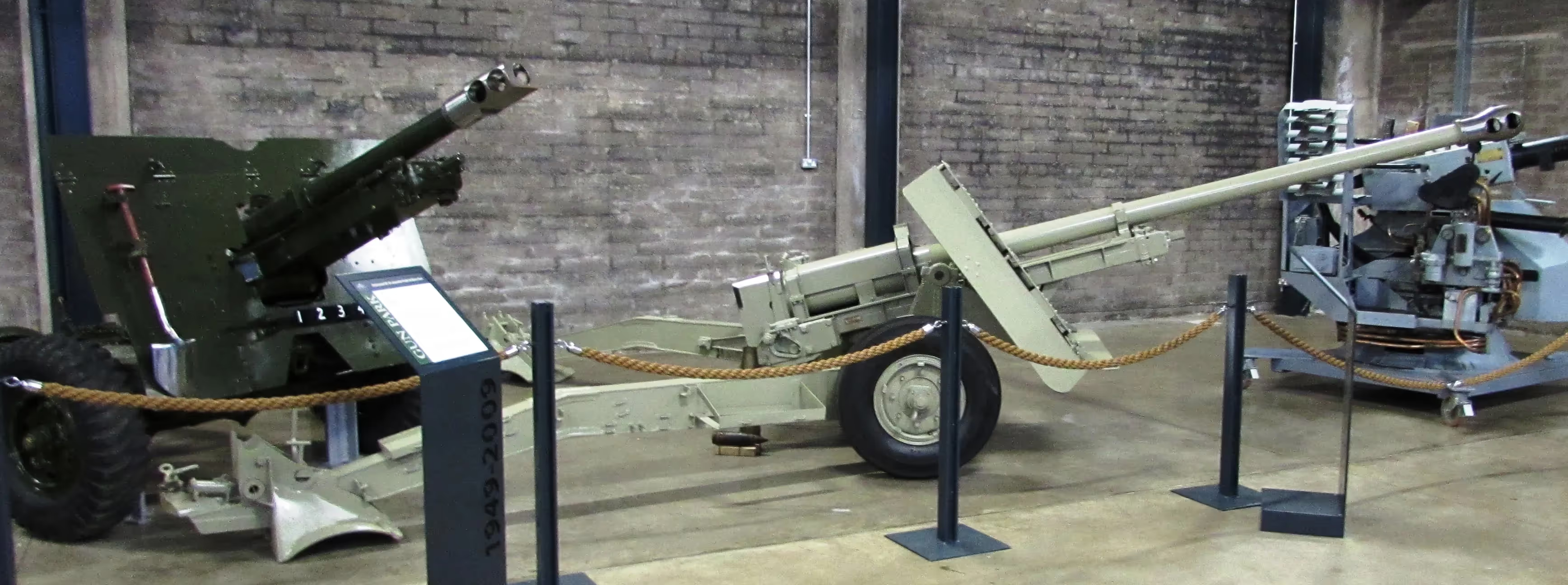

(Colin Stone Photos)
Ordnance QF 17-pounder Anti-Tank Gun. The 17-pounder is a 76.2 mm (3 inch) gun developed by the British during the Second World War. It was used as an anti-tank gun on its own carriage, as well as equipping a number of British tanks. Used with the armour-piercing discarding sabot (APDS) shot, it was capable of defeating all but the thickest armour on German tanks. It was used to 'up-gun' some foreign-built vehicles in British service, notably to produce the Sherman Firefly variant of the US M4 Sherman tank, giving British tank units the ability to hold their own against their German counterparts.

(IWM Photo, B10171)
Ordnance QF 17-pounder anti-tank gun of the 21st Anti-Tank Regiment, Guards Armoured Division, guards the approaches to Nijmegen Bridge, the Netherlands, 21 September 1944.


(Colin Stone Photos)
40-mm Bofors Light Anti-Aircraft Gun on naval mount.


(Colin Stone Photos)
40-mm Bofors Light Anti-Aircraft Gun on wheeled mount.


(Colin Stone Photo)
40-mm Bofors Light Anti-Aircraft Gun on wheeled mount with shield and limber.

(The Artillery Club Photo)
40-mm Bofors Light Anti-Aircraft Gun.


(Colin Stone Photos)
Ordnance QF 4.5-inch howitzer.


(Colin Stone Photos)
Artillery Command Post vehicle.


(Colin Stone Photos)
Artillery Fire Control vehicle.





